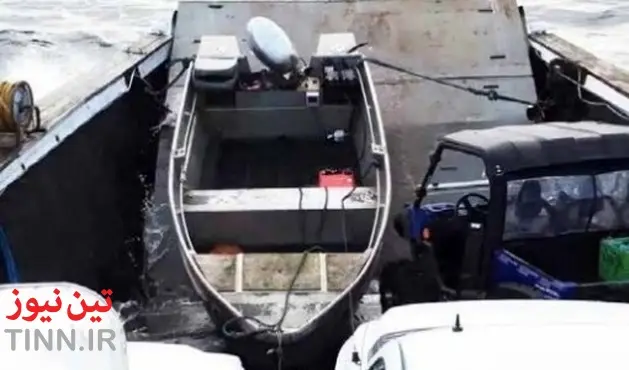|
Code:
78557
|
Investigation report on barge foundering and abandonment

TIN news: The Transportation Safety Board of Canada has issued investigation report on the foundering and abandonment of self-propelled barge ‘Lasqueti Daughters’ off British Columbia.
On 14 March 2015, the barge with 17 people on board, departed Campbell River, British Columbia. Partway into the voyage, the sea conditions deteriorated. Water began shipping on board via the spaces between the bow ramp, the bulwarks, and the main deck, and then downflooded into the forward storage compartment. The Lasqueti Daughters flooded but remained afloat, was abandoned, and was eventually towed to shore and intentionally beached. There were no injuries. The vessel was declared a constructive total loss.
The investigation revealed that the vessel had not been inspected nor was it certified as required by the Canada Shipping Act, 2001 (CSA 2001) and its regulations.
Findings
As to causes and contributing factors
On 14 March 2015, the barge with 17 people on board, departed Campbell River, British Columbia. Partway into the voyage, the sea conditions deteriorated. Water began shipping on board via the spaces between the bow ramp, the bulwarks, and the main deck, and then downflooded into the forward storage compartment. The Lasqueti Daughters flooded but remained afloat, was abandoned, and was eventually towed to shore and intentionally beached. There were no injuries. The vessel was declared a constructive total loss.
The investigation revealed that the vessel had not been inspected nor was it certified as required by the Canada Shipping Act, 2001 (CSA 2001) and its regulations.
Findings
As to causes and contributing factors
The weather conditions encountered by the Lasqueti Daughters resulted in water being shipped onto the main deck via the spaces between the bow ramp, the bulwarks, and the main deck.
The main deck, which had recently been partially replaced, was not watertight and allowed water to downflood into the forward storage compartment.
As the vessel was trimmed by the bow, and as the freeing ports were located on the aft portion of the main deck, water began to pool at the base of the bow ramp.
The master and the authorized representative attempted to pump out the storage compartments using the on-board pumps; however, the emergency pump did not pump water, likely due to an air lock, and the remaining pumps could not keep up with the ingress of water.
Water continued to enter the forward storage compartment and transfer progressively through all the bulkheads causing the vessel to commence foundering.
The main deck, which had recently been partially replaced, was not watertight and allowed water to downflood into the forward storage compartment.
As the vessel was trimmed by the bow, and as the freeing ports were located on the aft portion of the main deck, water began to pool at the base of the bow ramp.
The master and the authorized representative attempted to pump out the storage compartments using the on-board pumps; however, the emergency pump did not pump water, likely due to an air lock, and the remaining pumps could not keep up with the ingress of water.
Water continued to enter the forward storage compartment and transfer progressively through all the bulkheads causing the vessel to commence foundering.
As to risk
If a company’s health and safety program covers only some of its operations, and audits do not identify this situation, then there is a risk that hazards will not be identified or addressed.
If organizations with overlapping areas of responsibility do not share information and collaborate effectively among themselves as well as with vessel owners and masters, then there is a risk that gaps in safety oversight will occur.
If comprehensive surveys or mandatory inspections are not conducted, critical areas of a vessel may go uninspected, and masters and owners will have incomplete information about the condition and safety of their vessels, increasing the risk of accidents.
If organizations with overlapping areas of responsibility do not share information and collaborate effectively among themselves as well as with vessel owners and masters, then there is a risk that gaps in safety oversight will occur.
If comprehensive surveys or mandatory inspections are not conducted, critical areas of a vessel may go uninspected, and masters and owners will have incomplete information about the condition and safety of their vessels, increasing the risk of accidents.















![AIRBUS A380 [MORE THAN 600 PASSENGER’S CAPACITY PLANE]](https://cdn.tinn.ir/thumbnail/4jCp4EQvCU0b/IjHVrSYQrIAqIzXuTzADR7qLYX4idQT4nfq__26E5SCUPLMqfhWkWajvuO9Wfq1ql1TjV4dhkrHliNQU82kMpo2NNftT_NGEwHc9KXtN_rk731bmifa2IQ,,/airbus-a380-structure1.jpg)

Send Comment